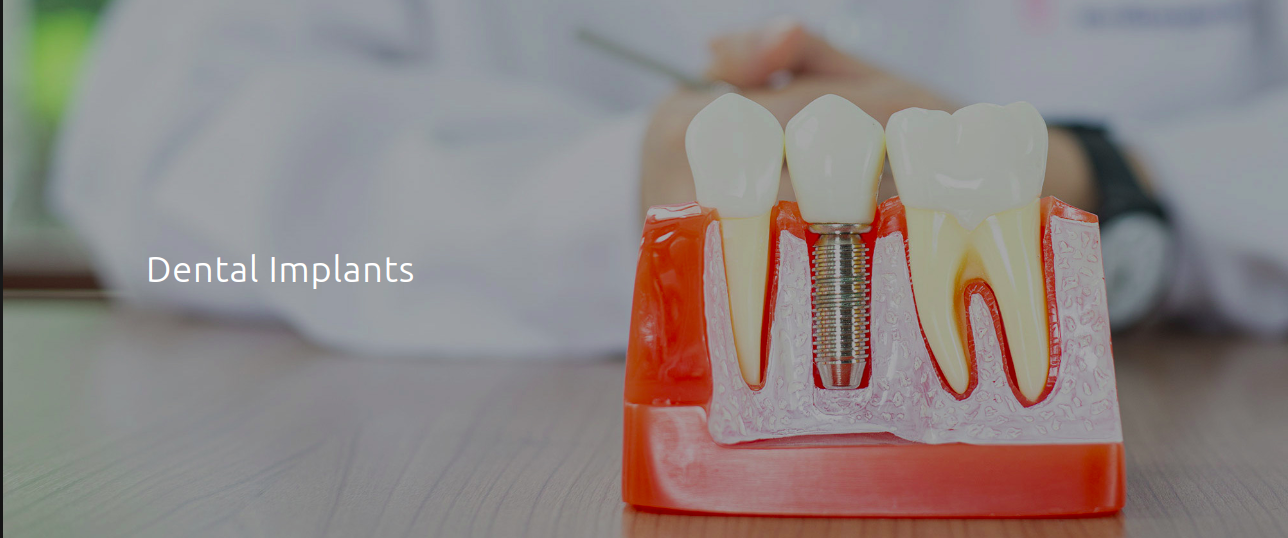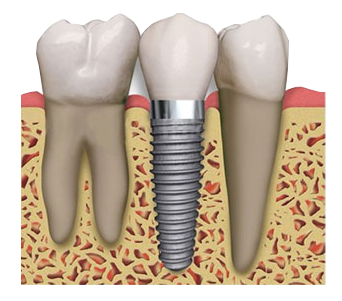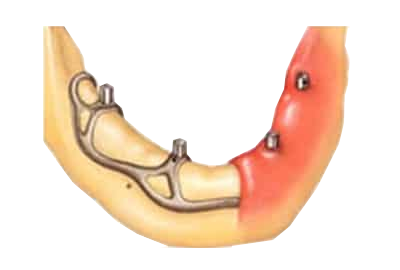

Dental Implants
Dental implants are artificial tooth roots that help to stop or prevent jaw bone loss by supporting a restoration for a missing tooth or teeth. The implantation procedure is considered as a form of prosthetic (artificial replacement) dentistry.
People who have lost their teeth may feel uncomfortable to smile or speak. Furthermore, biting irregularities caused by tooth loss can have a negative impact on eating habits, resulting in secondary health issues such as malnutrition.
Dental implants, by replacing missing tooth roots, give people the strength and stability they can eat all of their favourite foods without difficulty chewing. Furthermore, Dental Implant help to stimulate and maintain jaw bone, preventing bone loss and supporting facial structure.
Teeth are lost because of the following factors :
• Cavities in the teeth
• Failure of a root canal
• Excessive wear and tear
• Congenital deformities
• Gum disease (periodontitis)
• Trauma to the mouth (tooth injury)
Types of Dental Implants
Endosteal (in the bone)
This is the most common implant type. It is in the form of screws, cylinders, or blades that are surgically implanted into the jawbone. One or more replacement teeth are housed in each implant. Patients who are currently wearing bridges or removable dentures may benefit from this type of implant


Subperiosteal (on the bone)
The subperiosteal implants are not inserted into the bone, their structure differs substantially from that of endosteal implants. Subperiosteal implants are stabilised by a metal frame that fits over the jawbone and behind the gums, rather than an implant screw. This metal frame has a series of posts that are used to support the implantation of a dental prosthetic such as a crown, bridge, or denture.
Placing Your Implants – The Procedure
When you get dental implants, your tooth roots are replaced with metal tooth posts. These dental posts function similarly to artificial tooth screws. Implants differ from bridges and crowns and they function and look like natural teeth.
The way your dentist performs the dental operation is determined by the type of implant you require, if you have an allergic reaction, you may need to have numerous dental operations to allow your bone to heal properly around the implant. This healing process may take some time, but it will securely support the new tooth.
Initial Evaluation : Your dentist or oral surgeon will first perform a thorough evaluation to select the optimal dental implant technique for you based on the state of your jawbone. This preliminary examination involves X-rays, impressions, and matching the colour of your teeth to ensure that your implant looks as natural as feasible.
You will also go over all of your medical conditions and medications. To avoid infection, you may need to take antibiotics before surgery, depending on your condition or surgical implants.
Tooth Extraction : If you still have a tooth that needs to be replaced, your dentist will remove it before proceeding with the dental work. This can be done at the same time during the implant placement.
Your dentist will go over anaesthetic alternatives with you. Your dentist will most likely use a local anaesthetic to make you feel numb and relieve any pain. While the tooth is pulled, you feel a slight tug and pressure. After the extraction, you should refrain from blowing your nose, smoking, spitting excessively, or drinking via a straw. These behaviours can result in a dry socket and pain.
Inserting the Dental Implant and Bone Grafting : Dental implants are classified into two types: those that are introduced into the jawbone and those that are placed immediately beneath the gumline. Let us talk about whether or not you have the implant in your jawbone. If your existing jawbone is robust and thick enough, you may not require any additional bone.
Because you chew, your jaw must be robust, and your bone must be strong to safeguard the implant. If your jaw need additional bone, it is usually taken from a different part of your jawbone that is not near the implant.
If you have a graft, you may need to wait for the bone to heal before adding the implant. The dentist or surgeon will place the implant after the bone has healed. Following the placement of the implant in your jawbone, the jawbone will begin to develop around the implant. The implant is then integrated into your natural gum line. This procedure differs from person to person and might take anywhere from 3 to 9 months.
Abutment Placement : The dentist will install an abutment on top of your implant after it is stable enough. The implant is connected to your crown with the help of this piece. The abutment must be tightened so that it stays in place when you eat. Except for a slight pressure, you will not feel anything during this procedure, As the area will be anaesthetized using local anaesthesia.
Adding the Permanent Crown : Your dentist will create your artificial tooth or crown after your gums have healed. You have the option of having a removable or permanent implant.
A permanent implant cannot be removed to be replaced or cleaned. It is either permanentlyscrewed into the abutment or fixed in place.
Recommendations after the Dental Implant procedure
•Carefully follow the oral hygiene guidelines given to you by your dental professional after the dental implant procedure. Cleaning the implant and adjacent teeth on a regular basis is critical to the implant’s long-term success.
•Make an appointment with your dentist on a regular basis.
•Tell your dentist right away if your implant seems loose or painful.
Benefits and Risk
Dental implants can considerably improve a person’s quality of life and health if they are required. However, complications might emerge quickly after the installation of a dental implant or much afterwards. Implants failure usually defined as implant looseness or loss. If an implant fails, another surgical surgery may be required to repair or replace the implant.
Benefits of Dental Implant Systems :
•Restores chewing capacity
•Improves physical appearance
•Prevents jawbone shrinkage due to bone loss
•Maintains the health of the surrounding bone and gums
•Keeps neighbouring (nearby) teeth stable
•Improves quality of life.
Risks Associated with Dental Implant Systems :
•Damage to the surroundingteeth during implant procedure.
•Surgery Related- Injury to the surrounding tissues, such as sinus perforation
•Serious injuries during surgery (for example, fracture of surrounding jawbone)
•Inappropriate functioning of teeth, such as feeling that the teeth do not bite together normally.
•A sense that the tooth is loose or twisting in place as a result of an abutment screw that has become loose.
•Implant failure (looseness of the implant body)
•Systemic infection, which may be more likely in uncontrolled diabetic patients
•due to infection in bone and gums supporting the implant.
•delayed healing, which you may be more likely in patients who smoke.
•Difficulty in cleaning the gums around the implant, resulting in poor oral hygiene.
•Untreated periodontal disease.
•Post-surgical numbness caused due to nerve impingement or damage.
Before any magnetic resonance imaging (MRI) or x-ray procedures, always advise your health care professionals and imaging technicians that you have dental implants. Dental implants have the potential to distort or interfere with these images. The FDA is not aware of any adverse events associated with MRI or x-ray procedures involving dental implants.
